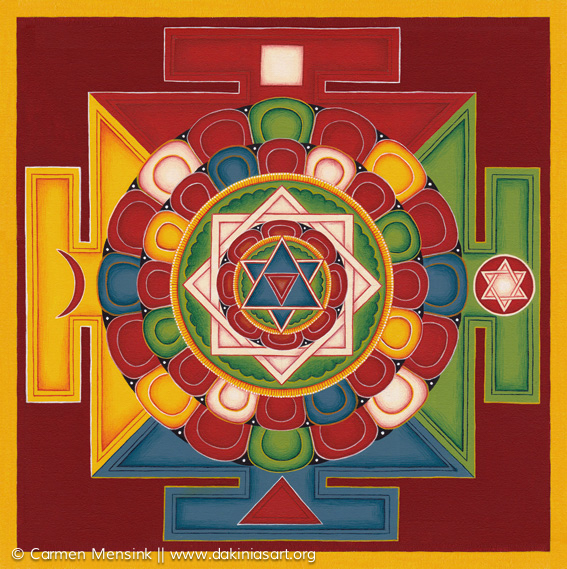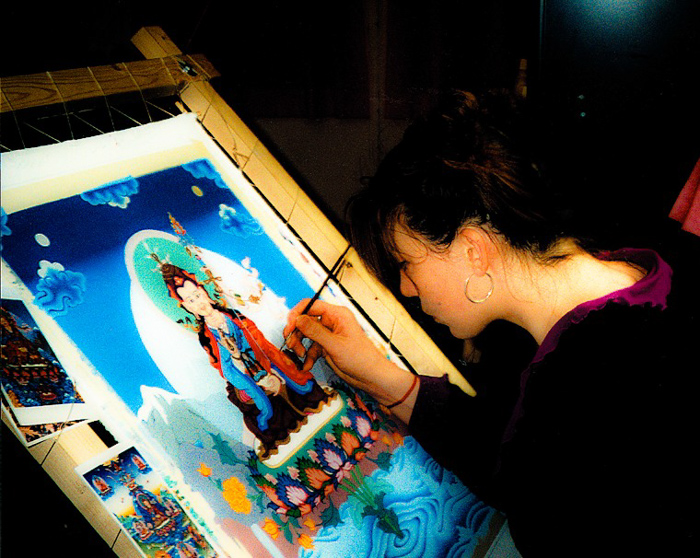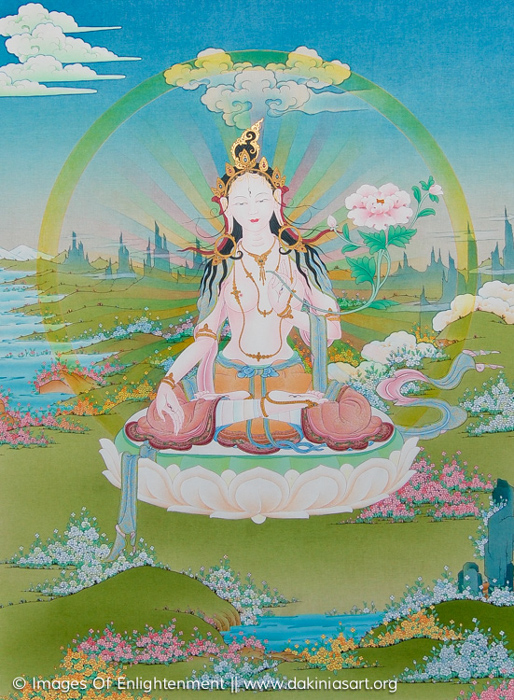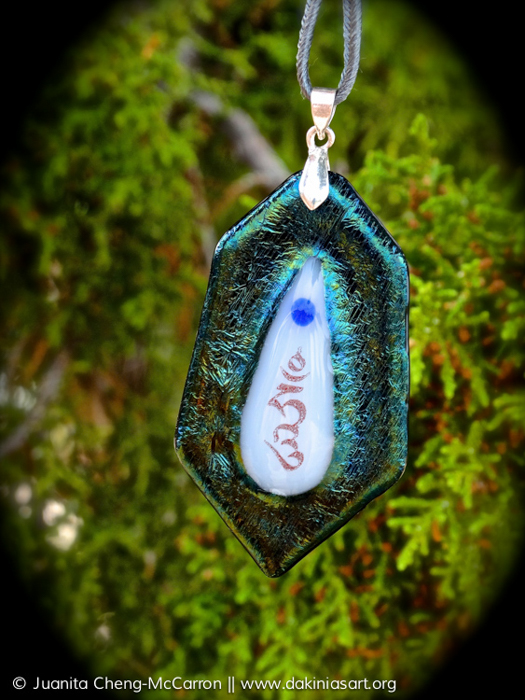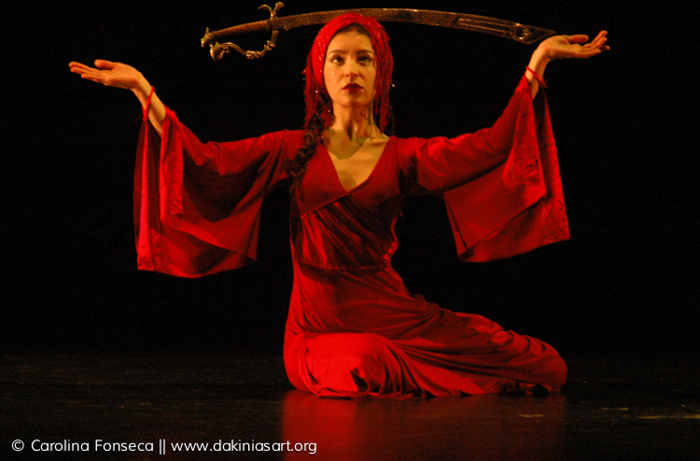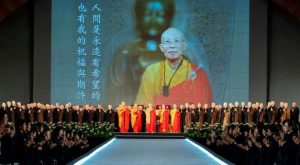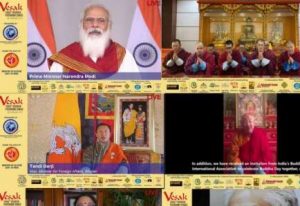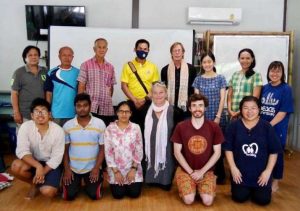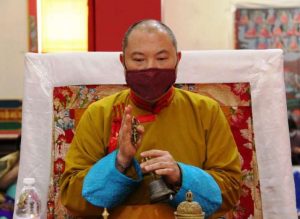“When you arrive at the extinction of reality, there is nothing but the spontaneity of pure potential. There is no other way to dance in the sky.” – Yeshe Tsogyal
The dakini principle has been a source of inspiration for artists and practitioners alike through the ages, and at the same time remains a great mystery that is very difficult to express in words. Chögyam Trungpa Rinpoche, when asked “What are dakinis?,” answered simply: “One never knows” (Chögyam Trungpa Rinpoche 2004, 440).
Often called “sky-dancers,” dakinis seem to be reminders of the qualities of emptiness, that which is the ground of every manifestation, the space of pure potentiality where everything and anything can arise, be, and then dissolve. As Judith Simmer-Brown so brilliantly describes it in her book Dakini’s Warm Breath: “She [the dakini] represents the inner experience of space, which is the inspirational impulse at the heart of enlightenment” (Simmer-Brown 2001, 52).
Focusing on the dakini as an endless wellspring of energy infusing creativity in each moment, The Yogini Project developed a multimedia platform where artists of all genders whose work emerges from practice and who are engaged in exploring dakini energy have gathered to display their art. As a complement to The Yogini Project’s comprehensive website dedicated to the outer form of the yogini—accomplished female teachers and sincere women practitioners worldwide—the Dakini As Art online gallery focuses on the inner aspect. It was launched in November 2014 and presents artworks and features on the dakini in art, the dakini as artist, and the dakini as art itself.
The further intent behind the project was to build an elegant platform that supports both practicing Dharma artists working in a variety of forms and the vast, beneficial activities of The Yogini Project. To this end, proceeds are shared equally between the project and the artists. It serves in practice as an ongoing fundraiser for The Yogini Project and as a source of exposure for inspired Dharma artists. It is run by the same team at the core of Dharma Eye, the Buddhist photography collective.
The Dakini As Art galleries feature both traditional artwork showing the feminine as icon—thangkas of female deities—and the works of Dharma artists employing a range of media and styles, from traditional to contemporary. There are also branches of the project featuring Dakini As Sound and Dakini As Dance. The diversity is great and the artwork of high quality, and each artist is unique in the expression of the dakini energy through their work. At the moment, the Dakini As Art platform features sixteen artists, of whom eleven are visual artists, four are dancers, and one is a musician. Two new painters who are extremely talented are being integrated to the galleries at this time, and two musicians will soon join as well. The collective continues to expand and grow, with fascinating new submissions regularly coming in.
The commitment to benefit is strong. In the aftermath of the recent devastating earthquakes in Nepal, Dakini As Art launched a special fundraising campaign in collaboration with the Nepali thangka painter collective Images of Enlightenment they represent. This month, 100 per cent of the proceeds from the sale of prints in IOE’s collection are going to support Tsoknyi Rinpoche’s relief efforts through his Tsoknyi Nepal Nuns. To date, more than US$3,500 has been raised for the nuns’ relief efforts through this campaign.
As a collective, Dakini As Art was formed through a public submission process initiated in summer 2014, prior to the launch of the website, through which Dharma artists whose art and creation were inspired by the dakini principle could apply to join. The call for applications was very successful, and a large number were received. The selection was based on the quality of the submissions and the authenticity of focus and influence of the dakini on the artists’ work. Artists may apply at any time through the submission forms available on the website, either for the visual artists branch or the dancers, musicians, or film-maker branches (see the links below). The organizers are especially looking into developing the film-maker and musician branches throughout the summer, and are always open to discovering new talent.
The Dakini As Art collective at present is indeed a very special one, spotlighting Dharma artists ranging from traditional Nepali thangka painters such as the Images of Enlightenment collective started by Binod Lama Yonjon in 2007, to Western Dharma practitioners that have mastered the art of hand-stitched Tibetan appliqué like Leslie Rinchen Wongmo, or that have explored and studied traditional thangka and temple mural painting as well as contemporary art like the exotic and refined Tiffani Gyatso. There is also a master of silk appliqué painted thangkas, Leslie Nguyen Temple, who has developed her own technique, which evolved from having the opportunity to participate in the creation of the giant thangkas from Tsurphu Monastery in Tibet between 1992 and 1997.
Other extremely talented thangka painters include Carmen Mensink, dedicated to the preservation of traditional thangka painting through both teaching and her art, and Laura Santi, whose spectacular works support visualization practice. Wilvin Pedersen and Alma Dankoff have experimented over the years, resulting in exquisite freestyle interpretations of traditional thangkas using aquarelle and blended acrylic and oil paints. Zoe Redman’s work is distinctive in the creative process of her paintings, which come to life during her multimedia performances.
Also among the visual artists are the grounded Marie Blazek, who brings the dakinis to life through her clay artworks, and the very fluid and poetic glass artist Juanita Cheng-McCarron, with splendid works manifesting through her unique creative expression.
The very diverse styles of the four dancers brilliantly embody the dakini, from the ritual dance of the classical art of Charya Nritya that LiAnne Takeuchi Hunt masterfully performs, to the formless freedom of movement and being of the amazing Yumma Mudra and Michel Raji, to finding bliss in growing intimate with death and dying as expressed in the dance of Carolina Fonseca. Last but not least, the Dakini As Sound branch is beautifully represented by artist Dréa Drury, whose music is a fusion of meditation, sonic druid, and the ongoing exploration of the depths of sound and voice.
The collective wonderfully expresses the dakini in art, the dakini as artist, and the dakini as art itself. To explore further, visit Dakini As Art.
References
Chögyam Trungpa Rinpoche. 2004. Glimpses of Space. New York: Shambhala.
Simmer-Brown, Judith. 2001. Dakini’s Warm Breath: The Feminine Principle in Tibetan Buddhism. New York: Shambhala.
For more information, see:
Dakini As Art: Nepal Fundraiser
Artist submissions for the Dakini As Art Galleries
Dakini As Art – Visual Artist Submissions
Dakini As Art – Dancers, Musicians, & Filmmakers Submissions




